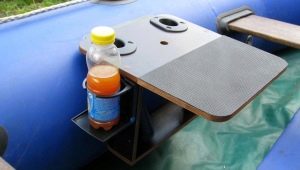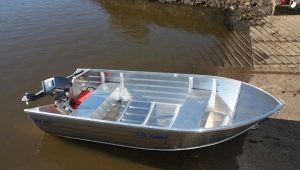Boat transom: features, recommendations for selection and installation

Many modern boats already have a transom for a boat from the factory. In other cases, it is possible to install a similar element, which can be purchased or made independently. Given the design features and performance of these devices, many boat owners are interested in recommendations for choosing transoms and installing them.
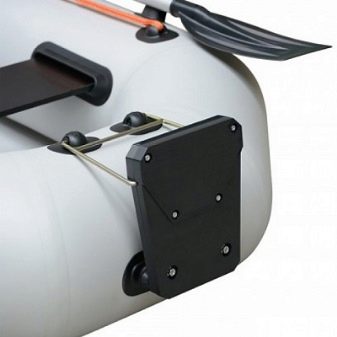
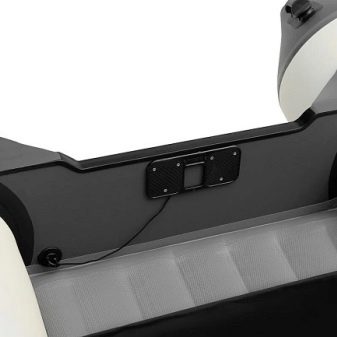
Requirements
The term "transom" itself comes from the English "transon". This word denotes a flat cut of the stern of a water craft. Today, there are several types of devices for secure mounting of outboard motors and additional equipment. We are talking about transoms for PVC inflatable boats, as well as stationary models and hanging elements for rowing boats. Lovers of fishing and water travel pay special attention to transoms for inflatable boats. Regardless of the design features of the floating facility, when choosing the considered structural element, one should focus on the following parameters:
- thickness;
- height;
- tilt angle;
- paint quality;
- degree of protection.
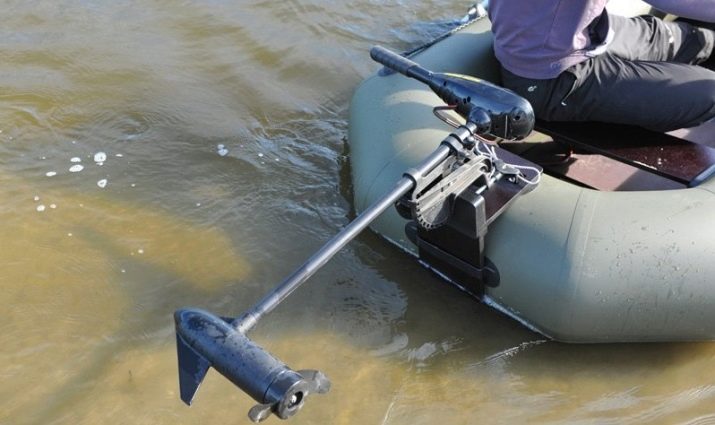
According to current standards, the thickness of the hinged transom for PVC boats when installing a motor with a power of 15 “horses” must be at least 25 mm. If the power plant capacity exceeds this indicator, then the minimum thickness is 35 mm. The permissible tilt angle is 4° (in rare cases 6°). Certain requirements are also imposed on the paintwork, which must be periodically updated and be of high quality. An equally important point is the material from which the transom is made. According to the requirements, it must be:
- dense;
- maximum resistance to external influences;
- durable;
- unresponsive to constant contact with water.
Among other things, the surface of the device is not made perfectly smooth. Please note that the outboard motor is attached to the transom with clamps. To ensure high-quality contact with the flat supports of the latter, the surface should have a slight roughness.

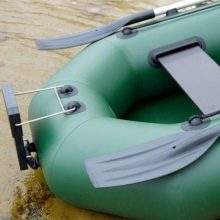

What are there?
Taking into account the design features and functionality, 3 main types of transoms for modern watercraft can be distinguished. These are devices for:
- boats, boats and catamarans with a rigid hull structure;
- small-sized inflatable watercraft;
- PVC inflatable boats (meaning stationary transoms).


In the first case, we are talking about the structure of the aft part of the floating facilities with a rigid hull. This element has a cutout reinforced with a special transom plate. It is on it that outboard motors are installed. The stern of such swimming facilities has a free open-type compartment. It is its component that is the transom, and it is used most often to accommodate a supply of fuel.

Suspended, adjustable devices for small PVC boats and inflatable catamarans are designed to install low-power motors. They can be plastic or made from transom boards. Most often, these removable devices are equipped with a set of fasteners. The outboard transom has a short leg (S) as standard.
In this case, the manufacturer's recommendations regarding the maximum power of the installed motors should be taken into account.

Stationary structures for PVC products are most often made of bakelite plywood. This material is characterized by maximum resistance to the negative effects of water with constant contact. The transom is installed in the stern by gluing at the stage of manufacturing the boat. It is important to remember that the height of the device in such cases is unregulated.
When purchasing such a boat, special attention must be paid to the angle of inclination, which should not exceed 6 degrees. This is due to the need for optimal immersion of the outboard motor foot into the water. In addition to the listed varieties, it is worth mentioning the transoms under the water cannon. These designs are specifically designed to fit motors with extended legs (L).
Boats equipped with such equipment are able to move through shallow water at maximum speed.

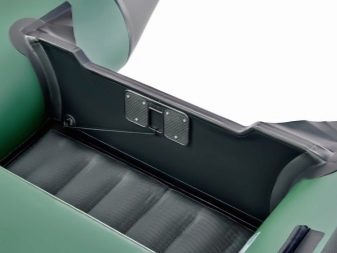
After installing all the bosses, it is necessary to wait for the glue to dry completely and bleed all the air from the cylinders. Installation of arches is carried out only on deflated watercraft. They are pre-connected to the transom plate and only after that the entire assembly is installed on the boat and secured with an eye. At the final stage, the boat is fully pumped up to check the correctness and reliability of the installation.
Summing up, we can say with full confidence that installing a transom on an inflatable boat is a fairly simple process. All installation work does not require a lot of special knowledge and skills, as well as significant time costs. Installing a device for the subsequent use of an outboard outboard motor will be within the power of even a beginner.



Criterias of choice
At the moment, a potential buyer has more than a wide range of accessories for installing outboard motors and various equipment. As a rule, it is quite difficult for beginners to understand such a variety, and therefore it is better to listen to the recommendations of experienced professionals. In this case, in any case, it is necessary to look for the optimal ratio of the price of the transom and its quality. Experienced owners of swimming facilities are advised not to save on the described structural element.
Despite the outward resemblance, boat transoms differ from each other in a number of ways. It's about quality, materials used, performance and manufacturer. As practice shows, the purchase of too cheap devices can lead to extremely negative consequences. If the transom itself or its mountings are damaged, there is an increased risk of damaging the boat itself with the propeller or sinking the outboard motor.
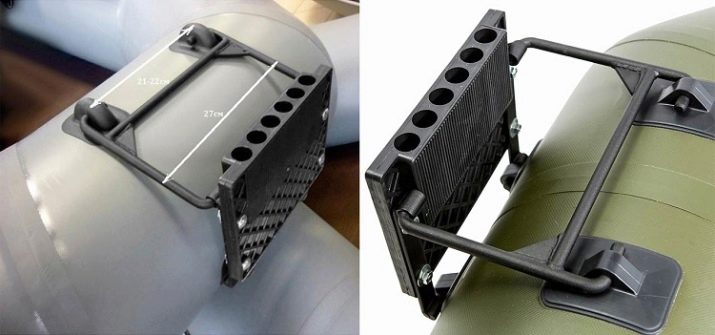
When choosing a device, you should take into account that it must withstand certain loads, including increased vibration. It, in turn, leads to a gradual weakening of the fasteners. For this reason, it is important to consider the quality of both the device itself and the fasteners. One of the key selection criteria is the dimensions of the transom. There is a unified system of standards. In accordance with current standards, the following types of devices are produced:
- S – height 381 for PVC inflatable boats;
- L - 508 mm high for boats;
- XL – height 635 mm for large yachts.
In the process of selection and purchase, it is also necessary to take into account the thickness of the structure. This parameter must correspond to the power of the outboard motor that is planned to be used. Another important point will be the angle of the transom. In addition to everything already mentioned, it is recommended to pay attention to the integrity of the entire structure and the absence of damage.



How to install?
As already noted, transoms for swimming facilities can be fixed and removable. In the first case, with the installation of the device, everything is very clear, since it is one of the stages in the construction of the boat itself. Mounted models have certain features and different mounting options. Most often we are talking about special brackets.
Initially, it should be noted that in addition to the traditional option with the installation of both the transom itself and the outboard motor at the stern, it is possible to locate such equipment on the bow of the craft.
Regardless of whether a ready-made device was purchased or made independently, its installation is carried out in several stages. In situations with a PVC boat, it must first be fully inflated.

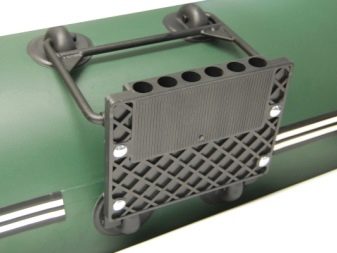
The next step will be gluing the so-called bosses (eye) at the installation site. Their location is selected taking into account the features of fastening the transom board (plate), which should be as comfortable and reliable as possible. After determining the place for the eye, glue should be applied to all the bosses and fixed to the boat hull. It is important to remember that the number of such elements depends on the length of the mounting arcs.
In the next video you will find an overview of a removable transom for an inflatable boat.























